The names of angles are in three categories:
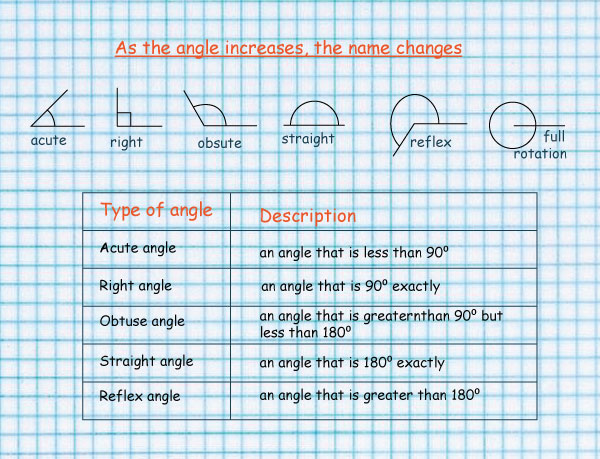
b) as a sum of a pair of angles
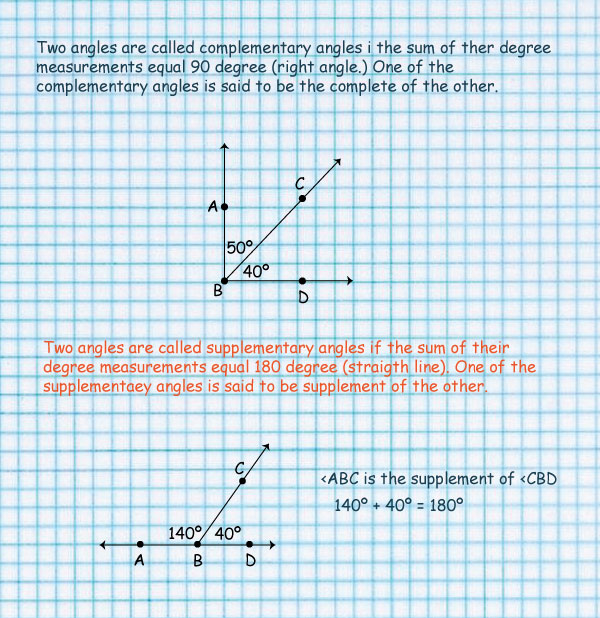
c) according to their specific position
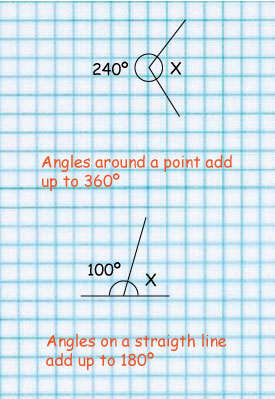
Vertically opposite angles, see image below:
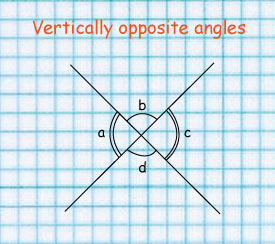
From the figure below a and c, b and d are vertically opposite angles.
Other angles in this class include:
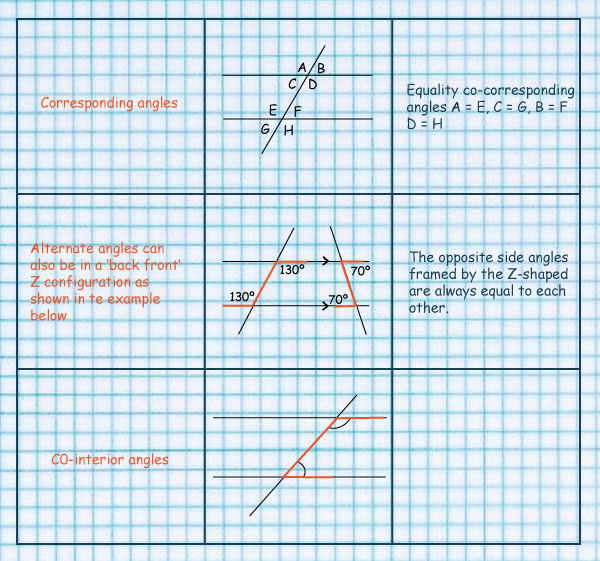
(See angle properties of parallel lines and transversals).
Class 6
1. In the figure below, AB is parallel to ED. Angle ABE = 200, angle EDB = 1200 and angle ECD = 700.

What is the size of the angle AEB?
A. 700 B. 500 C. 1300 D. 1100
2. In the figure below AE // BD, CD is perpendicular to AC, angle CDB = 240 and angle BEA = 560.
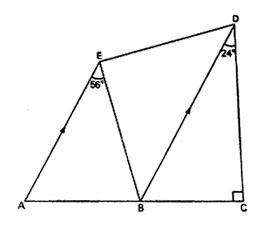
What is the size of the angle ABE?
A. 560 B. 580 C. 620 D. 660
3. In the figure below, CDEF is a straight line. CF is parallel to BA and BD is parallel to AE. Angle CBD = 440 and BC = BD.

What is the size of angle AEF?
A. 440 B. 1360 C. 680 D. 1120
4. In the figure below, ABE is a straight line. DC is parallel to AE. Angle CBE = 1100 , angle ACB = 800 and angle ADC = 1000.

What is the size of the angle CAD?
A. 300 B. 500 C. 400 D. 800
5. In the figure below, CDB is a straight line. Line CD = AD = DB. Angle ACB = 400
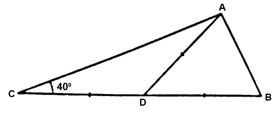
What is the size of the angle ABD?
A. 800 B. 400 C. 500 D. 1000
6. In the figure below, AE is parallel to BC. Line AB = AC = AD. Angle BAC = 520 and ADE is a straight line.
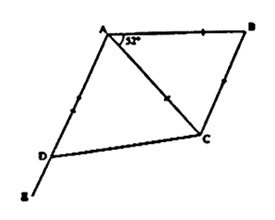
What is the size of the angle CDE?
A. 1160 B. 580 C. 1280 D. 1220
7. In the figure below, QS bisects angle PQR. Angle QPR = 560, angle SRN = 840 and PQ = PR. QRN is a straight line.
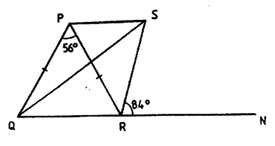
What is the size of the angle QSR?
A. 310 B. 340 C. 420 D. 530
8. In the figure below, ABCD is a quadrilateral in which angle DAB = 900 and angle ABD = 360. Line DA is parallel to CB and DB = DC.
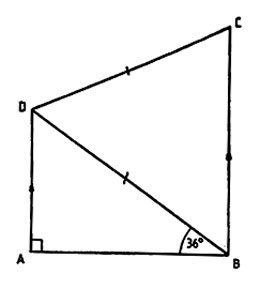
What is the size of the angle BDC?
A. 360 B. 540 C. 720 D. 600
9. In the figure below, MYRZ, XQZ, and RQS are straight lines. YX is parallel to RS. Angle MYX = 1400 and XQS = 600
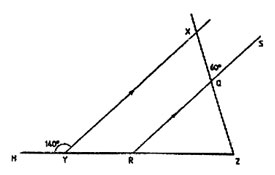
What is the size of the angle RZQ?
A. 800 B. 1200 C. 400 D. 600
10. In the figure below, EFGH is a quadrilateral and EFH is an equilateral triangle. Angle EFG = angle EHG = 900
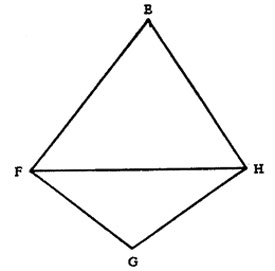
What is the size of the angle FGH?
A. 600 B. 900 C. 1200 D. 300
11. In the figure below, PQRS is a quadrilateral in which line PQ = line PR = line PS. Angle RPS = 680. TQR is a straight line and line PQ is parallel to line SR.
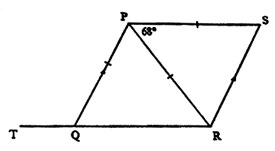
What is the size of the angle TQP?
A. 620 B. 680 C. 1180 D. 1240
12. In the figure below, PQ is parallel to RS.
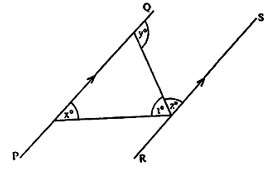
What one of the following statements is true?
A. x0 + t0 + z0 = 1800
B. y0 + t0 + z0 = 1800
C. x0 + y0 +z0 = 1800
D. x0 +y0 +t0 = 1800
13. In the figure below, line ADE is parallel to line BC. Angle DAB = 900 and angle EDC = 1100. Line AD = DC.

What is the size of the angle ACB?
A. 250 B. 350 C. 450 D. 550
14. In the figure below, XY and XZ are straight lines meeting at X. Lines MN and PQ are parallel. Line XY intersects line MN and PQ at T and F respectively. Line XZ intersects lines MN and PQ at V and G respectively. Line XT = TV and angle PFY = 400.

What is the size of angle TVZ?
A. 1100 B. 700 C. 400 D. 1400